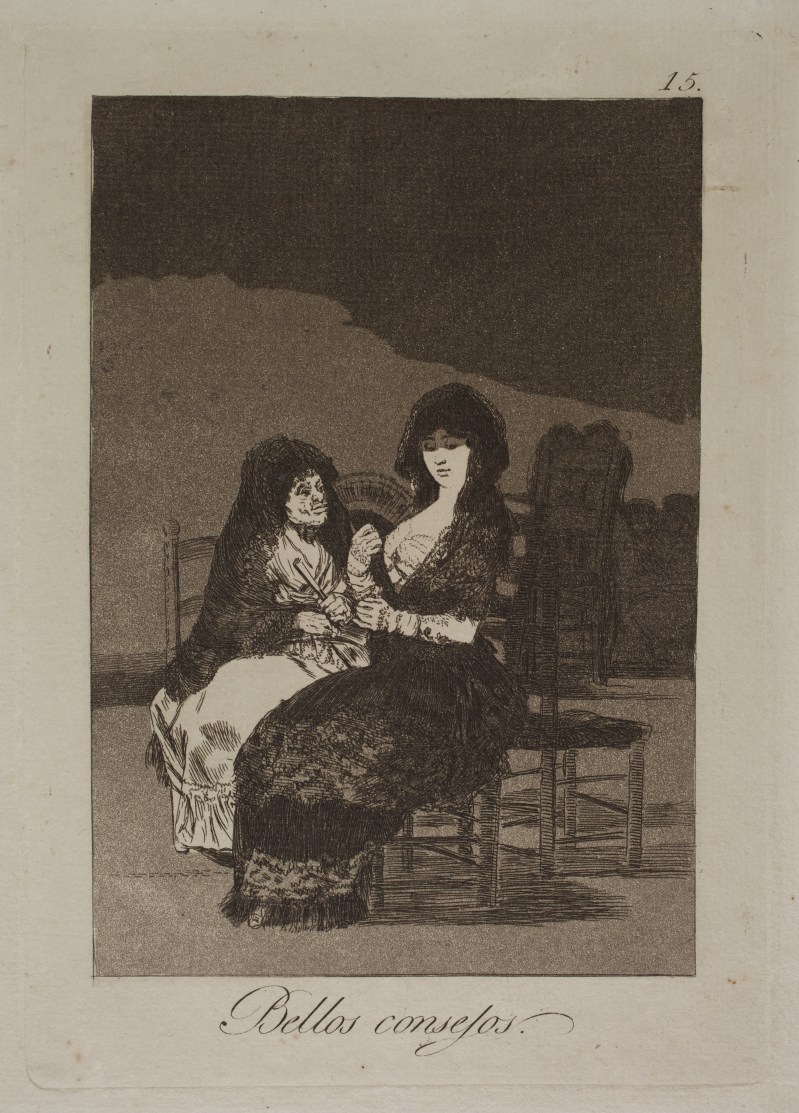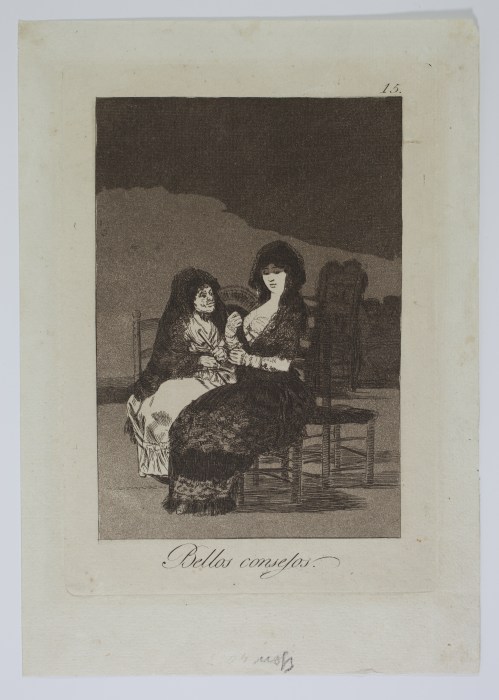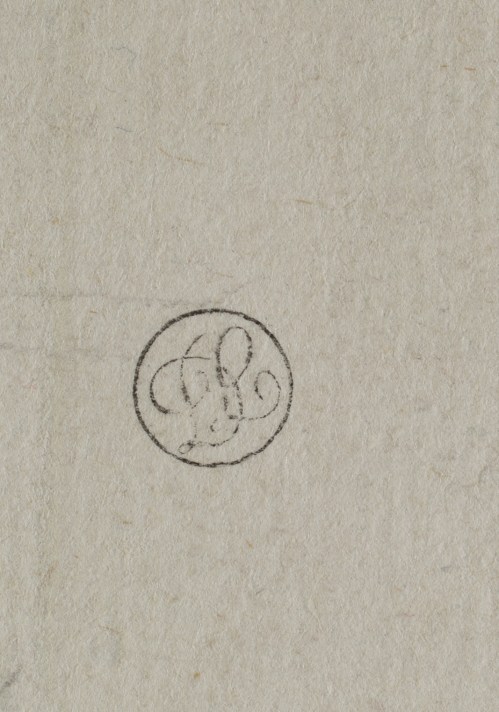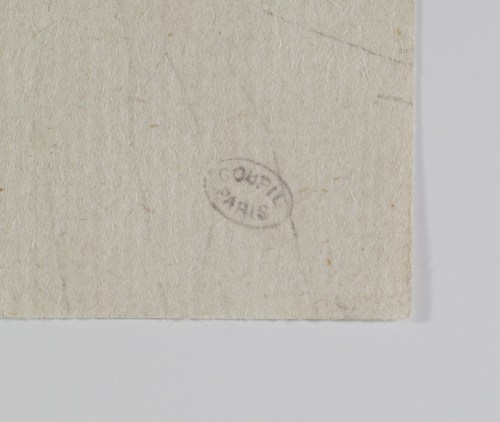Francisco GOYA y LUCIENTES: Bellos consejos [Pretty teachings] - 1798/99
Price: € 4500
Etching, burnished aquatint and burin, 215 x 151 mm. Harris 50, III-1 (of 12). Delteil 52.
Plate 15 of the Los Caprichos [The Caprices] series, first edition, 1799 (approximately 300 copies).
Superb impression printed in dark sepia on laid paper. In very good condition. Slight yellowing of the sheet. Tiny thin areas on the reverse in the upper corners. Margins slightly reduced (sheet: 265 x 187 mm).
Provenance:
- Loys Delteil (1869-1927) collection, his stamp in black on the back (Lugt 773). Loys Delteil, an important historian of printmaking and an engraver himself, dedicated volumes 14 and 15 of his Peintre Graveur illustré (XIXe ET XXe SIECLES) published in 1922, to the catalogue raisonné of Francisco Goya's prints.
- Goupil Paris, stamp printed in black, bottom right on the back (Lugt 1090a). Maison Goupil was an art publishing house. Frits Lugt indicates in his 1921 directory of Marques de collections de dessins & d’estampes that mark 1090a is rare, and found only on sheets not published by Goupil. Maison Goupil was founded around 1827 by Adolphe Goupil (1806-1893).
The manuscript in the Prado Museum, sometimes attributed to Goya, has this comment about the plate: “Los consejos son dignos de quien los da. Lo peor es que la señorita va a seguirlos al pie de la letra.¡Desdichado del que se acerque!” “The advice is worthy of she who dispenses it. The sad thing is that the young lady will follow it to the letter. Woe is the first one to approach her!” (translated by us).
The pair formed by the young woman and the old crone is reminiscent of the Maja and the Celestine, or the prostitute and her madam, recurring characters in Goya’s œuvre. For now the chair of the suitor is empty, but he appears in other plates from the Caprichos, such as Ni asi la distingue [And Still He Doesn’t See Her], ¡Qué sacrificio ! [What A Sacrifice!] ou ¿Quien màs rendido ? [Who Is The Most Servile?].
The Museo del Prado holds a preparatory sketch.







